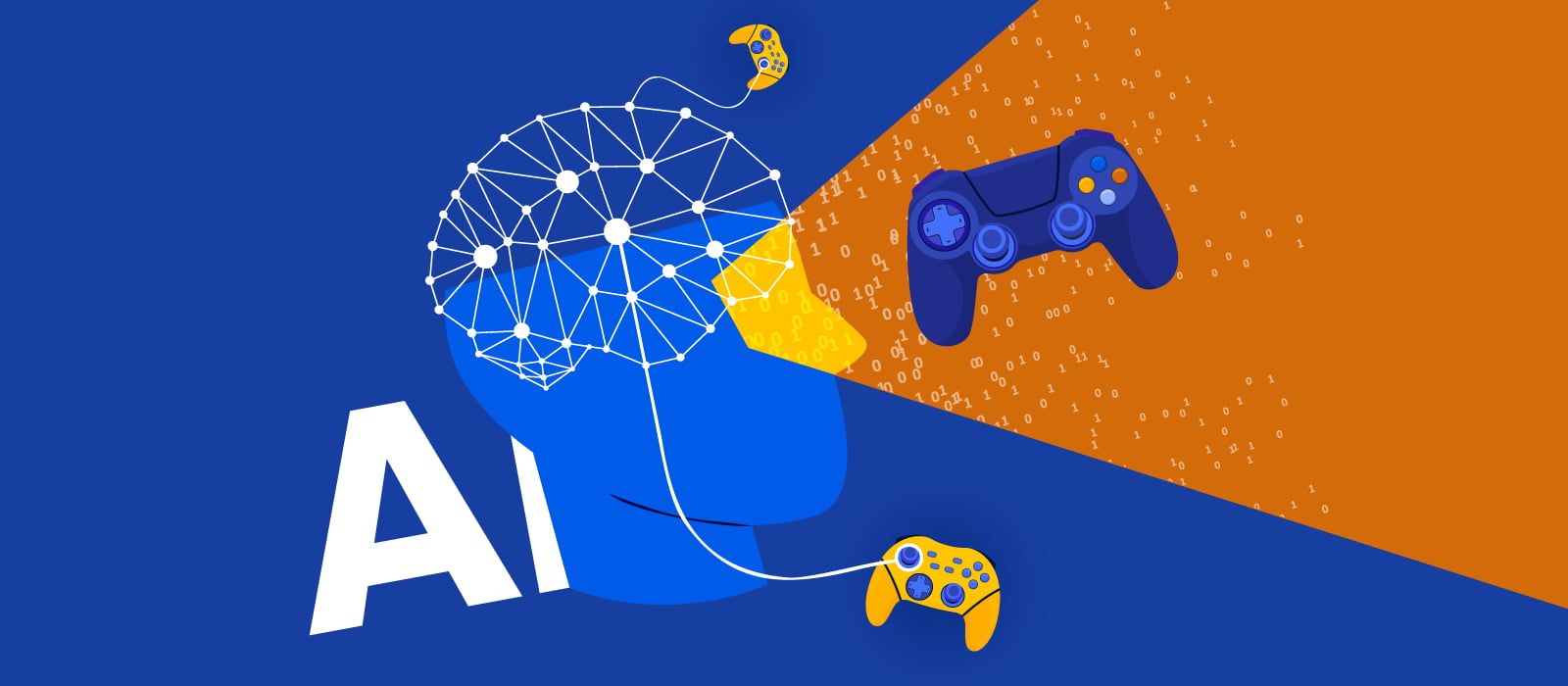Harnessing the Power of AI Text Analysis to Enhance Video Game Development
by Waseem Ahmad on Jun 19th, 2023

Harnessing the Power of AI Text Analysis to Enhance Video Game Development
Introduction
Video games have become an integral part of our entertainment landscape, captivating millions of players worldwide. As the gaming industry continues to evolve, developers are constantly seeking innovative ways to improve their games and provide immersive experiences. In the dynamic and competitive world of video game development, the ability to process and analyze information quickly and accurately is crucial to success. With the advent and recent popularity of artificial intelligence (AI), game developers now have powerful tools at their disposal to read and analyze data faster and more accurately than ever before. The landscape of video game development has been forever transformed by the rapid advancements in artificial intelligence, and this article will be covering exactly how the power of AI text analysis tools can be harnessed to enhance the field of video game development.

Using AI to Detect Errors
As with any video game in existence, players often encounter minor bugs and glitches when they log on to play their favorite titles. However, at times, these bugs and glitches are hard to detect because they only trigger when very specific actions take place, making the detection and resolution of errors or glitches that may negatively impact gameplay one of the greatest challenges faced by game developers. The solution? Implement AI algorithms to detect errors and guarantee the quality and stability of video games.
By analyzing vast amounts of gameplay data, AI algorithms can quickly and accurately identify any anomalies present, including graphical glitches, collision detection issues, and gameplay inconsistencies. For example, game developers could implement AI algorithms to analyze gameplay data, monitoring metrics such as frame rate, memory usage, and network latency. These metrics could then be compared to baseline patterns through training on large datasets, allowing AI algorithms to identify any deviations that may indicate performance issues or bugs. If a game suddenly experiences a significant drop in frame rate during certain gameplay scenes, AI can flag that instance as an issue and alert game developers to check it out.
This proactive approach allows developers to address issues promptly, ensuring smoother gameplay experiences for players. Furthermore, AI can detect graphical glitches by comparing expected visual outcomes with actual renderings in real-time, allowing developers to effectively pinpoint errors and respond to these errors in a timely manner. This method of error detection not only saves precious development time and resources, but it also gives game developers the freedom to focus on creating new content for their games, instead of completing rigorous testing sessions to detect minor bugs and glitches.

Clarifying Deeper Understanding and Engaging Players with AI
Alongside being able to detect errors faster than a human ever could, AI tools, particularly in the realm of natural language processing (NLP) and machine learning, empower game developers to enhance players' comprehension of complex game mechanics, objectives, and quests. AI-powered chatbots and virtual assistants serve as knowledgeable companions within the game world, providing real-time assistance and guidance to players. Let’s use the newly released game, The Legend of Zelda: Tears of the Kingdom, as an example. In this action-adventure fantasy world, there are over 125 side quests (missions) that need to be completed before one can claim that they have “beaten the game.” While some players have been part of the Legend of Zelda franchise for several years and know the game inside and out, there is a considerable majority of players who are new to the franchise and have little to no clue what to do after completing the first set of beginner quests, causing frustration and potentially leading them to stop playing the game. That’s where AI tools come into play.
AI-driven chatbots and virtual assistants utilize various NLP algorithms to understand player questions, display relevant answers, and offer tailored hints or tips to overcome challenges. These AI companions can interpret and respond to player questions about gameplay mechanics, objectives, or in-game puzzles, providing concise and helpful explanations. For example, when a player is unsure about how to progress in a quest or how to navigate through a particular area, they can turn to an AI companion for guidance. The AI companion(s) can analyze the player’s unique situation and provide step-by-step instructions or contextual hints, ensuring that players have a clear understanding of what they need to do next.
Additionally, AI companions have the ability to adapt their responses based on individual player preferences and playstyles. By learning from player interactions and gameplay data, AI algorithms can tailor their guidance to align with each player's specific needs. For instance, if a player prefers a more challenging experience, the AI companion can offer subtle hints or nudges, allowing the player to solve problems and complete quests independently. On the other hand, for players who may be struggling or seeking a more guided experience, the AI companion can provide more explicit guidance or even offer alternative solutions.
Aside from providing real-time assistance, AI-powered chatbots and virtual assistants can also analyze player behaviors and patterns to offer personalized guidance. By monitoring player actions, choices, and performance, AI algorithms can identify areas where players may struggle or get stuck. They can then proactively provide hints or suggestions to help players progress and overcome obstacles. For example, if a player consistently fails to complete a particular challenge, the AI companion can recognize this pattern and offer targeted advice to help the player overcome the challenge. This personalized assistance not only aids players in understanding intricate game systems but also fosters a sense of connection with AI-driven characters, enriching the overall gaming experience.
Lastly, AI companions can engage in interactive dialogue with players, adding an additional layer of immersion and narrative depth to the game. These AI-driven characters can engage in meaningful conversations, providing backstory, lore, or contextual information that enhances the player's understanding of the game world.
Speaking of lore, are you interested in learning the lore behind characters from your favorite video games? Instead of watching a 15-minute YouTube video that may have false or fabricated information, you can simply click here and type in the name of the character from your favorite video game! Keep in mind, however, that some characters simply do not have a confirmed backstory, so this command may not always work.
Anyways, through advanced natural language understanding, AI tools can interpret player responses and adapt the conversation flow, creating a dynamic and interactive narrative experience. By implementing AI to clarify deeper understanding, game developers can bridge the gap between complex game mechanics and player comprehension. Essentially, AI-powered companions not only provide valuable guidance but also foster a more immersive and enjoyable gaming experience. The combination of AI's analytical capabilities and NLP algorithms enables players to navigate through the game world with confidence, empowering them to fully engage with the rich narratives and intricate gameplay systems that video games offer.

Using AI to Analyze Player Sentiments
Detecting errors and having in-game AI text analysis bots is wonderful, but at the end of the day, understanding player sentiments and emotions is vital for game developers striving to create captivating and enjoyable experiences. AI, through sentiment analysis, delves into player feedback from various sources, such as in-game chat logs, reviews, and social media posts. Sentiment analysis enables developers to gain valuable insights into player experiences, preferences, and pain points. As briefly showcased in last week’s article, by analyzing textual feedback, AI algorithms can classify player sentiments as positive, negative, or neutral. This analysis goes beyond simple keyword matching, as AI algorithms can be trained to understand the nuances of language and context, capturing the true essence of player sentiments. For example, AI can identify whether a player is expressing frustration due to a challenging boss fight, praising the immersive world design, or critiquing a particular game mechanic.
Interested in determining whether a lengthy player review is positive or negative, or seeing how sentiment analysis would work on a small-scale? Simply click here, paste a player review, and receive a concise answer alongside some suggestions of how to improve based on the given review.
One of the primary applications of sentiment analysis in video game development is the evaluation of player reviews and feedback. By automatically analyzing and categorizing player reviews, developers can identify common themes, sentiment trends, and areas for improvement. For instance, if a large number of players mention dissatisfaction with a specific aspect of the game, such as the difficulty curve or character progression, developers can prioritize addressing these concerns in future updates or expansions. This data-driven approach allows for continuous improvement and optimization based on player preferences.
In addition to reviews, AI text analysis can be applied to in-game chat logs and social media posts to gauge player sentiments in real-time. AI algorithms can monitor and analyze player conversations, capturing their reactions, emotions, and overall satisfaction levels during gameplay. This real-time sentiment analysis enables developers to quickly identify potential issues or areas of high player engagement, allowing them to take note of these successes and potentially replicate similar experiences in future content updates.
Furthermore, sentiment analysis can be coupled with other gameplay metrics to gain deeper insights into player experiences. By correlating sentiment analysis with gameplay engagement metrics such as playtime, completion rates, or in-game purchases, developers can understand the relationship between player satisfaction and specific gameplay elements. For example, if sentiment analysis reveals that players who expressed positive sentiments about the game's narrative also had longer play times and higher completion rates, developers can invest more resources in crafting compelling, lengthier storylines and immersive narratives.
In essence, the integration of sentiment analysis into game development allows developers to make data-driven decisions that prioritize player satisfaction. By understanding player sentiments, developers can tailor their efforts to address areas of frustration, enhance positive aspects, and create experiences that resonate deeply with players. The continuous monitoring of sentiment trends through AI-driven text analysis ensures that developers stay connected to their player base, fostering stronger player engagement, loyalty, and long-term success.

Conclusion
Artificial intelligence, specifically AI text analysis, is reshaping the field of video game development. With its many capabilities, AI tools can swiftly detect and resolve errors, enhance players' comprehension and engagement, and help game developers unlock valuable insights into player experiences. The breathtaking power of artificial intelligence isn't limited to just video game development, however, and we hope you're as excited as we are to dive deeper into the many ways these new tools can be used to assist humans across a variety of different skill levels and careers. Feel free to stay up-to-date with the ever-evolving landscape of artificial intelligence by checking out our collection of articles on the future uses of AI, using some of our simple but powerful AI tools, and creating your own AI prompts to quickly complete tasks.